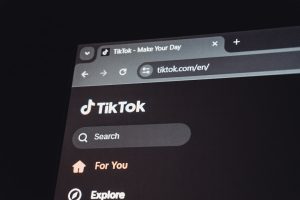
Webmasters, marketers, and SEO professionals have recently found themselves facing a new challenge: tracking user engagement from Google’s AI Overviews (formerly known as Search Generative Experience or SGE) has become increasingly difficult. Google has made changes to how AI-generated search results forward traffic, effectively stripping referrer data and obfuscating source paths. This change has caused confusion and frustration as analytics tools struggle to attribute this growing segment of organic traffic properly.
Initially, when users clicked links within AI-generated answers, the referrer header—typically used by analytics platforms like Google Analytics, Matomo, or Plausible—was missing. This meant that traffic from AI Overviews appeared as direct traffic, misleading businesses and publishers about where their visitors were actually coming from.
google search, ai overview, data tracking
Why Did Google Make the Change? Google has remained somewhat opaque about the reasons behind the shift. Speculation in the webmaster community suggests it may be a combination of multiple factors:
- Privacy concerns — Aligning with broader trends in digital privacy and regulatory pressure, such as GDPR.
- System architecture changes — The AI-generated results might be served from a unique domain or iframe stack, inadvertently stripping referral headers.
- Control over data flow — Google potentially retains better insight into what content performs well in AI Overviews, while third parties lose visibility.
This development created significant complications for marketers trying to assess the ROI of SEO strategies. Missing referral data distorts user acquisition reporting, making it hard to identify which content truly drives engagement or conversion when surfaced by AI-driven recommendations.
The Partial Fix: A Glimmer of Hope?
After mounting pressure and feedback from the industry, Google introduced a partial fix that restores some tracking capabilities. As of mid-2024, some clicks from AI Overviews now include limited referral data, typically marked as either search.google.com or sometimes wrapped via an internal redirection service that preserves metadata.
However, this fix is inconsistent. Across user sessions and different query types, tracking behavior varies. For example, queries that result in succinct AI answers with direct links might include referrers, while others—especially those with image carousels or embedded shopping lists—still drop referrer data.
analytics dashboard, traffic sources, seo tools
What Can Marketers Do About It? Until Google standardizes tracking from its AI Overview clicks, marketers are adopting alternative strategies:
- Server-side logging: Matching server logs against user behavior can offer insights that client-side trackers miss.
- UTM parameters: Encouraging the use of UTM tagging within shared URLs—even though it’s impractical within search-generated content—is a temporary workaround.
- Session stitching: Tools like GA4 and advanced analytics platforms are deploying probabilistic session tracking to guess which visits are from AI Overview pages.
While imperfect, these mitigation efforts help fill in some of the data gaps left by Google’s changes.
How This Affects the SEO Landscape
With Google’s growing push towards AI-enabled search experiences, businesses and publishers must adapt to a reality where transparency in traffic origins takes a backseat. Organic search strategies will remain vital, but evaluating their performance now requires more sophistication and reliance on indirect metrics like engagement time, bounce rates, and internal session linking.
This development also underscores concerns about Google becoming a “walled garden” of information. When search results become full-blown answers rather than navigational pathways, click-through traffic—the cornerstone of website monetization—is at risk.
seo impact, website analytics, google behavior
FAQ: Tracking AI Overview Clicks
- Q: Why can’t I see referrals from AI Overviews in analytics?
A: Google initially didn’t send referrer headers for these clicks. Traffic from AI Overview appeared as direct traffic in analytics platforms. - Q: Has this issue been fully resolved?
A: No, it has only been partially fixed. Some sessions now show limited referral data, but it is still inconsistent. - Q: Can I do anything to better track this traffic?
A: Yes, consider using server-side logs, enhancing client-side tracking, or integrating tools with probabilistic session stitching. - Q: How does this affect SEO performance reporting?
A: It creates blind spots in attribution, making it harder to assess which content performs in AI search contexts. - Q: Is this change permanent?
A: It’s not clear. Google may refine their approach, especially if there’s continued pushback from the industry.
As AI continues to reshape the digital landscape, staying agile in how data is collected and interpreted will be critical to maintaining a competitive digital strategy.






